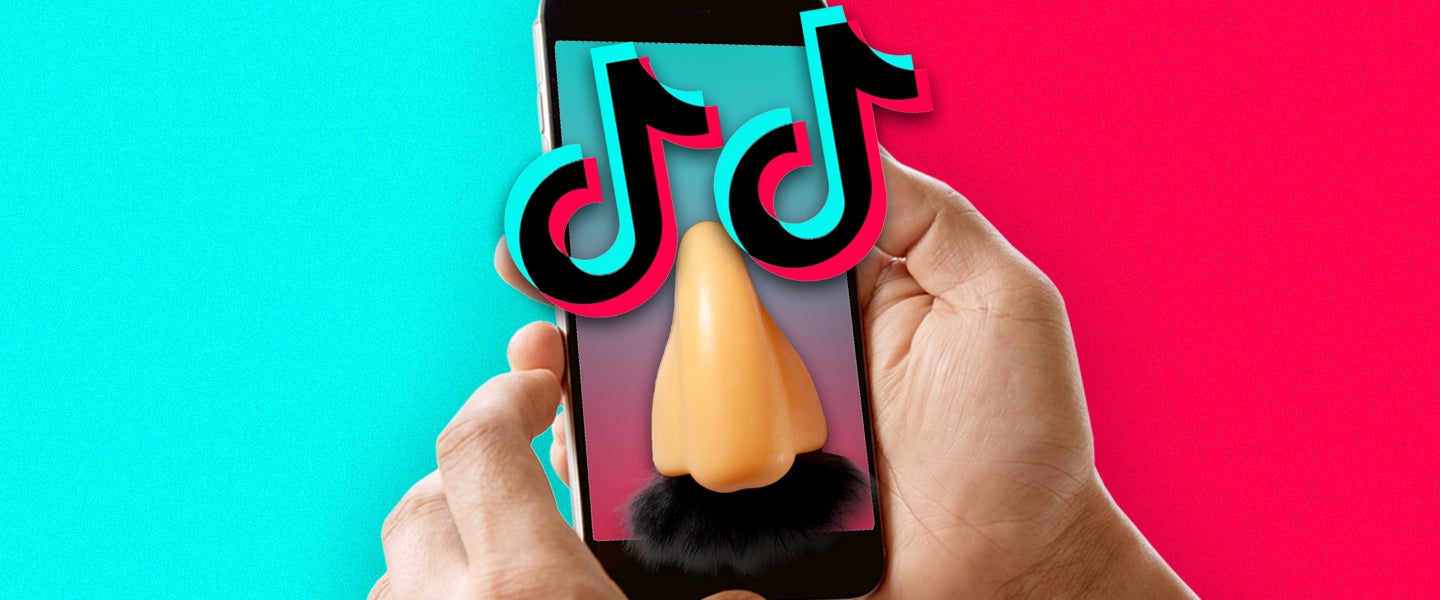As TikTok continues to grow, its top creators are capitalizing on accounts with millions of followers by securing Hollywood agents, trips to New York Fashion Week and even features in Super Bowl ads. They’ve spent months, even years, crafting the perfect brand identity.
And now, many of them need an escape.
“I was getting trapped in a box on my main [account],” Sam Andrews tells MEL. The 18-year-old high school senior, who posts as @samueljeffersonandrews, has accumulated over 2.3 million followers since August 2019 with a mix of roleplay comedy videos and discussions of global issues, which he calls “TikTalks.” After seven months of posting on TikTok, Andrews is feeling creatively stifled. “I had to live up to some sort of mysterious facade,” he says. “I wanted to be more see-through.”
So in early January, he decided to create a second TikTok, called @samsfikfok. He posted 17 videos documenting a normal school day. Unlike his main page, where he’s optimized his posting schedule and developed a distinctive style, Andrews doesn’t give any thought to his secondary account. “On my FikFok, I literally just press record, say whatever I want to say and then post it without looking over it at whatever time of day it is,” he says.
While he might not be the first to create a “FikFok,” Andrews is leading the charge. FikFok stands for “fake TikToks.” It derives its name from Finstas, which are “fake” Instagrams — more personal accounts often used for shitposting; posting more private, intimate content; and lurking on crushes or exes.
Though similar in name, FikFoks and Finstas serve different purposes. “A Finsta is posting silly stuff. A FikFok is posting whatever you want with no stress of your main account,” D.J. Ford, 18, tells MEL. He has 1 million followers on his main account, @djislessthan. Inspired by Andrews, he launched his FikFok, @djsfikfok, three weeks ago. “Basically, the only reason I’m making these is because Sam told me he had a great time making them, and he seemed like he was having a really happy time — so I’m gonna try,” Ford says in his first FikFok vlog.
While most Finstas are private, the nature of TikTok’s emphasis on virality through the public “For You” page forces FikFoks to also be widely accessible. This means the content is safer. “It’s just for the fun of it,” says creator Meg Garvoille, noting that she still uses her FikFok to attract more attention to herself. “I still post TikTok [trends] on that account to try and get some sort of clout,” she says.
This is the key difference between Finstas and FikFoks. Working as extensions of the main account, FikFoks are more like YouTube vlog channels. In the early 2010s, YouTubers created these secondary channels to chronicle their day-to-day interactions and add another avenue to make money per view. Generally, they were less edited and more stream-of-consciousness. They felt more real.
In recent years, though, the secondary vlogger YouTube accounts have diminished in popularity. Top personalities like iJustine and Jim Chapman shut down their secondary vlogging channels. It’s time-consuming and draining documenting every moment of your life.
Not everyone has stopped vlogging. David Dobrik and Colleen Ballinger (aka Miranda Sings), two of the biggest YouTubers in the game, still update vlog or long-form video channels. But most remaining secondary accounts have shifted away from day-in-the-life videos.
“We’re seeing secondary channels really become new business ventures,” Verge reporter Julia Alexander tells MEL. Creators like Logan Paul and Ethan Klein have podcast channels, while Shane Dawson just started a makeup account.
One YouTube creator told Alexander that a secondary channel is necessary to expand beyond your main channel’s focused topic. “It doesn’t make as much sense for YouTubers in 2020 to have a second channel that’s similar to their first,” Alexander says. “The whole point — from what I’ve seen — is to expand business practices, develop new audiences and raise revenue opportunities not available as much through their main channel.”
With his FikFok, Andrews is attempting a comeback and paying homage to the YouTube vloggers he grew up idolizing. “I just always loved vloggers. Casey Neistat was my favorite,” he says. Having once been an obsessive fan, Andrews is investing in his own ride-or-die audience — a group that craves him, not just his content. “I want the people who would watch my content to be on my FikFok,” Andrews says, and he notes that many of his FikFok followers leave comments saying he’s their friend. “It’s sort of manipulative, but it’s really fun.”
A second TikTok channel may not increase a user’s likelihood of landing on the app’s coveted For You page, but creators say a FikFok can still be good business. Andrews, who will attend George Washington University in the fall but plans to pursue a career as an online creator, recently encouraged his 450,000 FikFok followers to leave comments on a paid promotional post (on his main account) for the forthcoming streaming platform Torify.
For each comment on the videos, Andrews claims, he received more money from Torify. The TikTok video now has over nearly 100,000 comments. “I’ve never gotten more than, like, 10,000 comments before,” Andrews says. “It’s the power of asking for what you want with people who care about you. That’s something the FikFok has.”

